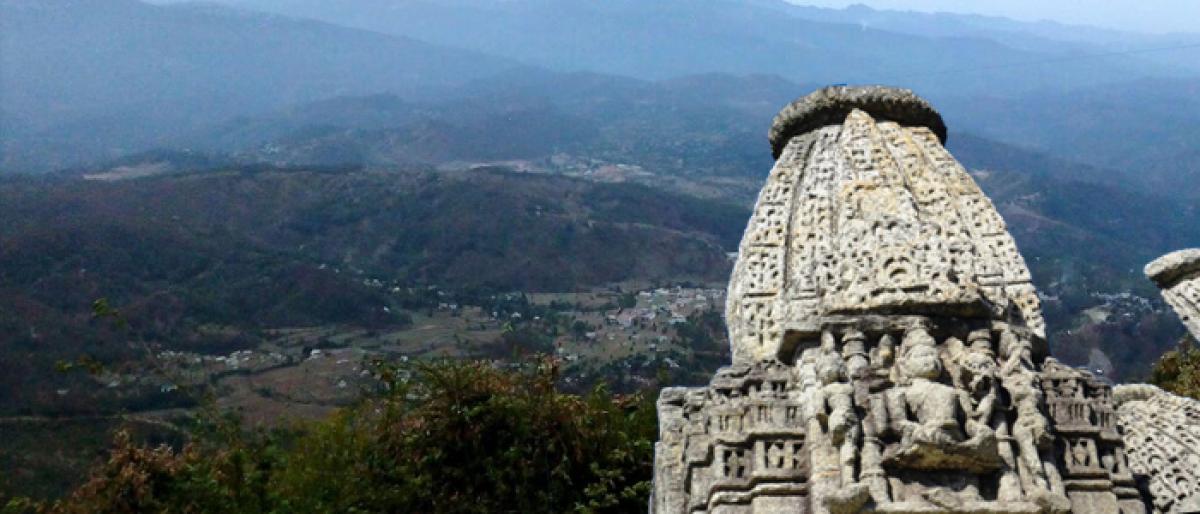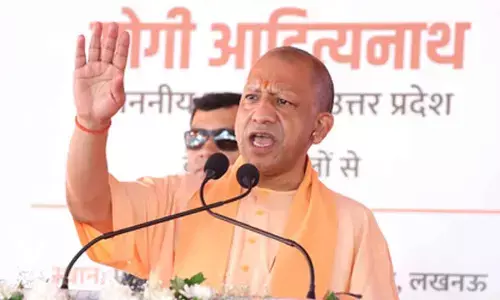Delve into a piece of glorious past

In India, history, heritage and architecture are often ignored for being boring and irrelevant things from the past. But all it takes is a temple-studded magical and scenic site like Dwarahat (which has as many as 55 ancient temples) to initiate interest about a bygone era.
In India, history, heritage and architecture are often ignored for being boring and irrelevant things from the past. But all it takes is a temple-studded magical and scenic site like Dwarahat (which has as many as 55 ancient temples) to initiate interest about a bygone era. Although many of these temples are not in the “ideal” condition, however, they are a part of a not so glorified era of a great kingdom.
Dwarahat lies in the Kumaon region of Uttarakhand and like the region itself, is surrounded by thick green forests and gently rolling hills. Dwarahat (Dwara = way + Hat = Heaven). So the word stands for a way of Heaven) was once ruled by Katyuri Kings from around 7th century to 11th. Their empire spread from Nepal to Kabul in Afghanistan and is even mentioned in the travelogues of Chinese traveller Hieun Tsang. So, can you imagine the enormity of the Katyuri Kingdom?
However, in the eleventh century the Katyuri empire fell apart and what only remains in bits and pieces are their temples. Dwarahat is home to these ancient temples, all tucked into the lush green mountainside. The Dwarahat temples are divided into eight distinct groups, constructed in the Indo-Aryan, Maru-Pratihara or Nagara type.
Although in a dilapidated condition, the Gujar Deo Temple can be described as a masterpiece of temple architecture of the region of Sekhari shikhara type. It is an orthogonal temple. In elevation shikhara of the temple is composed of small replicas arranged in receding order one above another. Because of these multiple miniature shikharas, it is called Sekhari. This temple has intricate ornate carvings and represents the most developed type of Nagara temples (north Indian type) of Central Himalaya.
Kacheri Deval Group of temples comprise of 12 shrines in this group, five each living in two rows while the remaining two stand separate on a higher terrace. Though these temples are relatively stunted, their stylistic similarities bring them very near to the Ratan Deo temples at Dwarahat. These shrines have a common portico with series of free-standing pillars with plain shafts and brackets in front. These temples were dedicated alternatively to Siva and Vishnu.
The temples are constructed mainly of masonry blocks of Pre-Cambrian granite gneiss available in the nearby area. Instead of mortar, iron clamps and dowels have been used to tie adjoining blocks. The construction work of the temple indicates that the ancient builders were conversant with the planes of weakness in the rocks, which were used for easy splitting and trimming.
The rock face in a nearly 2m column of a temple wall shows that joint planes were utilised for obtaining such giant columnar rock-blocks. The grooves and ridges have been cut along the foliation planes in the gneiss. The most striking feature is the ease with which this gneissic rock has been chiselled to different decorative styles including the perfect circular form and also the geometric pattern of the blocks in the temple walls.
Dwarahat is actually a small hamlet. The valleys surrounding the place gives an island-like feel. As if the place is floating in the valleys. Bright sunshine greeted us the next morning as we woke up to almost clear blue skies. The region seems to have been a pilgrimage hub of sorts in the past. Just 20 km away from Dwarahat lies the Maa Dunagiri Temple. Legend has it that the mountain on which the temple stands was brought to the region by Lord Hanuman. We reached Dunagiri Temple a little later.
As the story goes, when Hanuman was carrying the rock laden with “Sanjiwani buti” to rescue Laxman injured in the battle of Ramayana, a piece of it fell here. This incident gave this place its name “Doonagiri” (“giri” meaning fell). A temple was built in honour of goddess Vaishnavi. It is believed that the bronze plate inside the temple dates back to 1181 AD. The “Dunagiri Temple” is located at a distance of 18 kms from Dwarahaat and involves a one-kilometre trek from the road head at Manglikhan. We left soon after our breakfast and was at the base within half an hour.
As we started climbing the stony and narrow path along the mountain edge, I felt a surge of strange energy and did not feel any fatigue all through the trek whatsoever. Somewhere mid-way during our trek, it started raining heavily and we had to take out our raincoats from my backpack. Climbing a mountain path such as this one could be very dangerous especially when it’s raining. Rain along with pine needles along the path can make the mountain surface very slippery as I discovered during our trek.
Finally, we reached the top of the hill and entered the temple. We decided to spread our raincoats and sit on them. I sat in the Lotus pose (Padamasana) and was immediately lost in a trance. One does not have to try and meditate as it comes naturally where one almost feels being present on a different plane far away from the mundane world. The silence and the grace that prevailed within the cave were unlike anything I had experienced before in my lifetime. The Himalayas are scattered with beautiful temples with fascinating myths about them. If Hindu mythology and hills are some of your interests then Dwarahat presents a perfect combination of the two.














